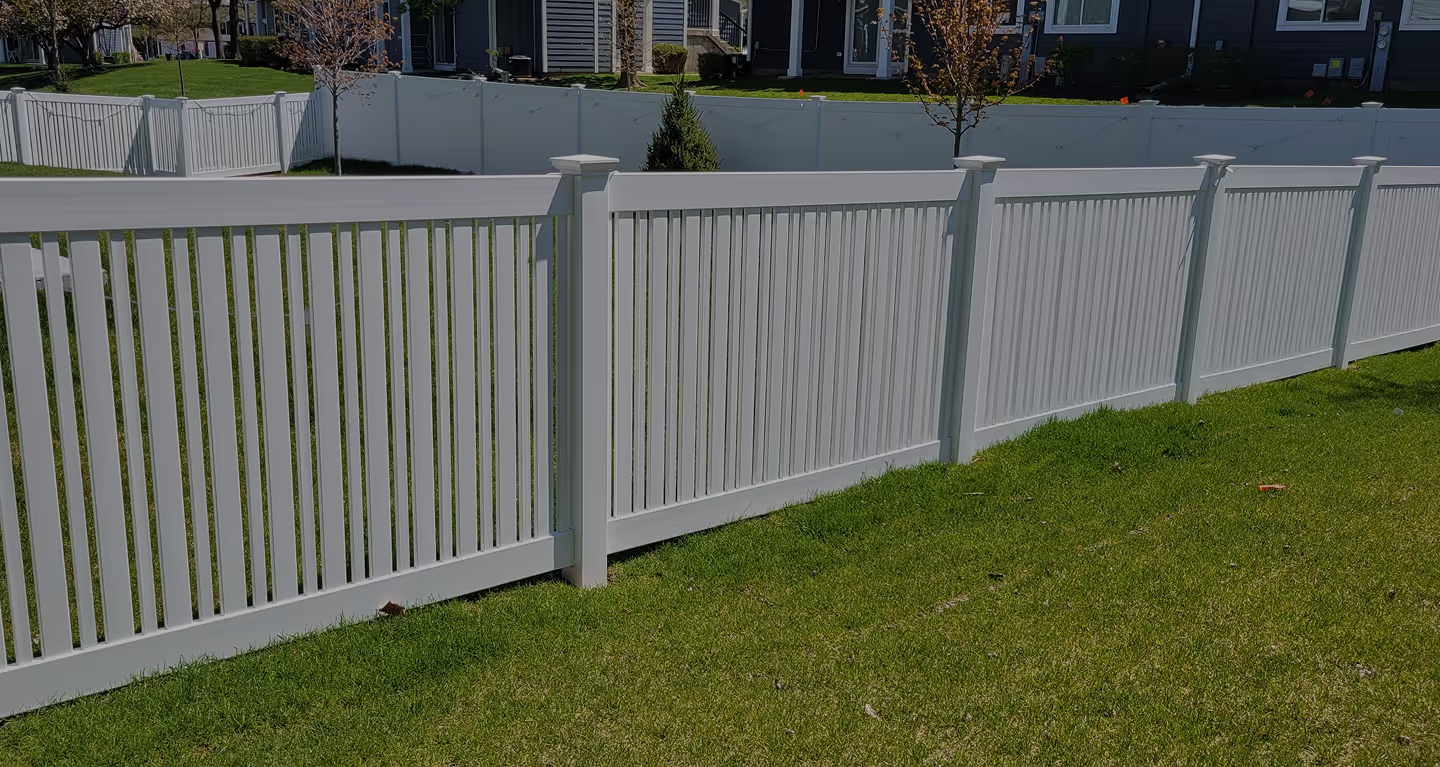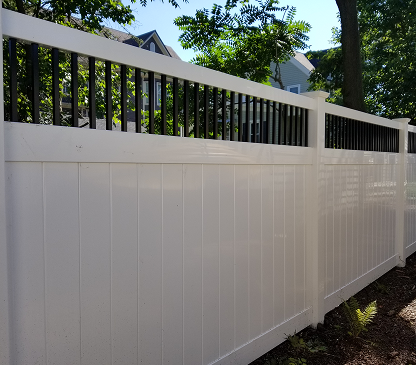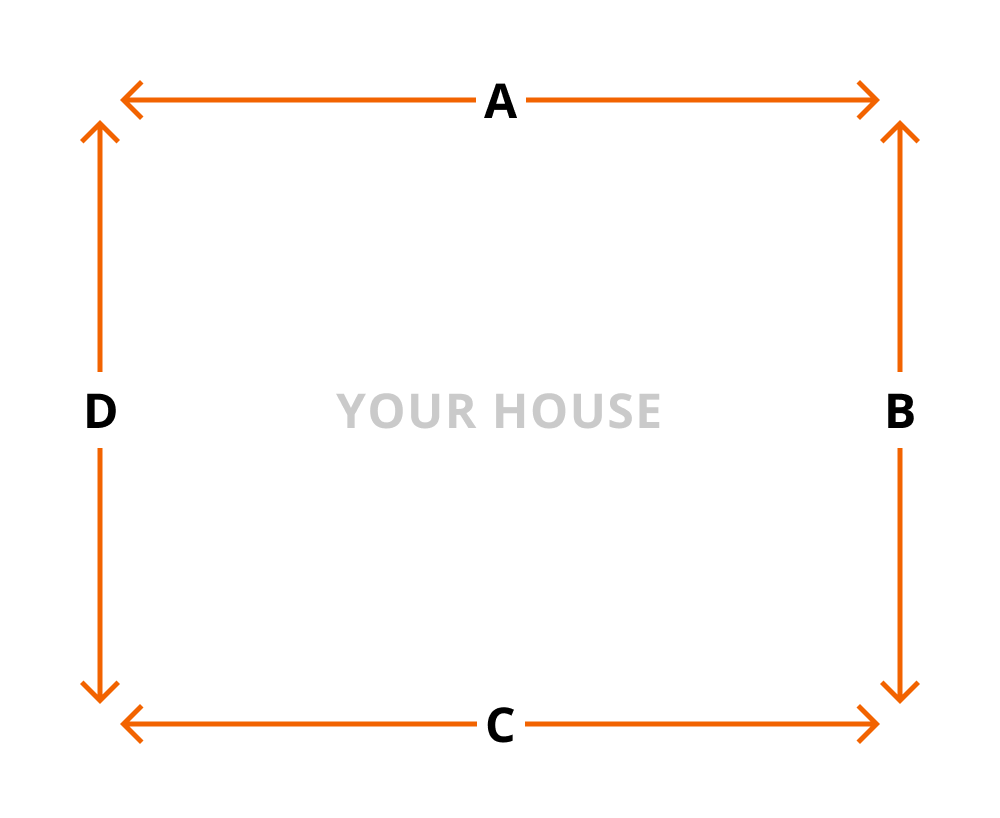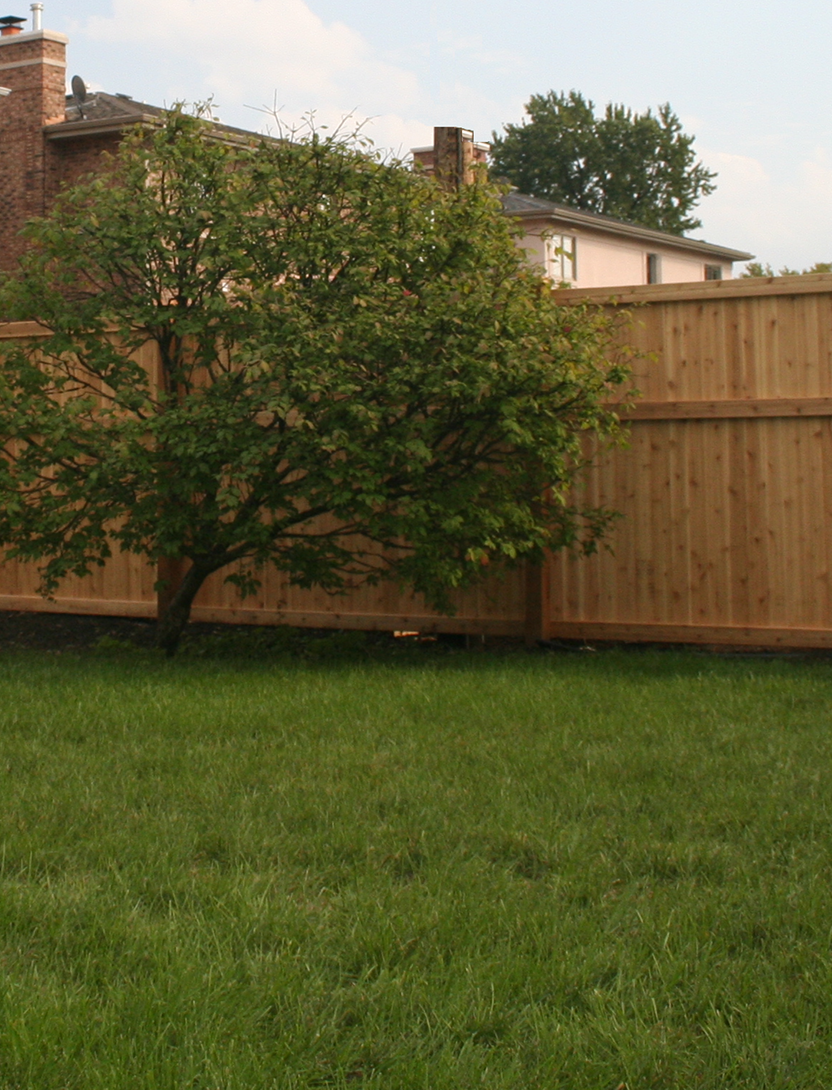How to Calculate Your Vinyl Fence Cost
Step 1: Measure Your Property Perimeter
Accurate measurements are the foundation of your cost estimate. Use a tape measure to calculate how much fencing you need.
- Measure each section separately (A, B, C, D in our calculator)
- Count how many gates you’ll need and their widths
Formula:
Total Linear Feet = (A + B + C + D) - (Number of Gates × Gate Width)
Step 2: Select Your Fence Style
Different vinyl fence styles come with different price points. The more material and design complexity, the higher the cost. But your fence isn’t just about cost — it’s about function and style.
| Fence Style |
Collections |
Privacy Level |
Best For |
| Privacy Fence |
Estate, Hampton Estate |
Maximum (100%) |
Security, Complete Privacy |
| Semi-Privacy Fence |
Manor |
Moderate (70-80%) |
Balanced privacy, airflow |
| Spaced Picket Fence |
Cottage, Classic/Madison |
Minimal (30-40%) |
Decoration, Boundary Definition |
Each style can be customized with different post caps, gate designs, and even decorative lattice tops to enhance the look.
Step 3: Choose the Right Height
Fence height matters for privacy, cost, and even local regulations.
- 4' height Great for property boundaries while keeping an open view
- 5' height Adds moderate privacy without feeling too enclosed
- 6' height The most popular choice for full privacy (available in all colors)
- 8' height Maximum coverage, available only in Estate style
Something to keep in mind: 8 fences need deeper posts and extra concrete, which can increase installation costs.
Step 4: Consider Color Options
Vinyl fences aren’t just white anymore! There are multiple colors to choose from, but some come with an extra price tag.
- Standard Colors: White and Tan (included in base price)
- Premium Colors: Coastal Cedar and Dark Walnut
Heads up: Premium colors are only available in 6' height fences and may have different maintenance needs over time.
Step 5: Include Gates in Your Plan
A fence without a gate is like a house without a door — you need at least one. But gates aren’t one-size-fits-all, and they can have a big impact on the overall cost.
- Standard gate widths: 3', 4', and 5'
- Cost factors: Larger and taller gates require extra materials and reinforcement
- Security features: Self-closing hinges and specialty latches may cost extra
- Structural needs: Gates need reinforced posts, which cost 2x-3x time more than regular fence posts
Choosing the right gate:
- Single-door gates work best for standard entry points (3'-4' wide).
- Double-door gates are the better choice if you need space for vehicles or equipment (6'-10' wide).
Why Include a Contingency in Your Budget
Our vinyl fence calculator automatically adds an 8% contingency to your estimated total. This buffer helps account for unexpected issues that commonly arise during fence installations:
- Hidden obstacles like large roots or buried debris when digging post holes
- Special hardware for pools or key lockable latches and selfclosing hinges
- Extra reinforcement for corner posts and gates in high-traffic areas
- Site preparation needs that become apparent only after work begins
Factors That Affect Installation Costs
Terrain and Ground Conditions
The type of land you’re working with plays a huge role in both cost and difficulty.
- Sloped terrain may need longer pickets
- Rocky soil may require heavy-duty equipment to dig post holes
- Clay soil is tough to dig through but provides excellent stability
Site Preparation Requirements
Before installation begins, some prep work might be necessary, which can impact your budget.
- Removing an old fence adds labor and disposal fees
- Clearing out overgrown vegetation makes installation easier
- Grading uneven land may be required for a smooth fence line
- Checking for underground utilities is essential to avoid damage
Chicagoland Climate Considerations
The Chicagoland area presents unique challenges for fence installation due to its extreme seasonal temperature fluctuations, high winds off Lake Michigan, and freeze-thaw cycles. These environmental factors directly impact how vinyl fences must be installed to ensure longevity and stability in our region.
Our climate requires special attention to proper post setting. Some installers use a method called "dry-set concrete" (pouring dry concrete into post holes and letting ground moisture set it over time), which we strongly recommend for cedar fences, but not for vinyl fences.
Cedar Rustic always mixes concrete on site, setting posts at the correct depth to prevent frost heave during our harsh winters.
The Installation Process
Building a vinyl fence isn’t as simple as snapping panels together. It’s a multi-step process that requires precision to ensure it lasts for years. Here’s how professionals get it done:
- Site prep – Marking underground utilities, clearing obstacles, and setting up guide strings for perfect alignment
- Digging post holes – In Chicagoland, this means going 36-42 inches deep to prevent shifting from frost heave
- Setting the posts/Installing panels and rails – Carefully placing each post, attaching the panels, sliding the rails into the posts, and then securing them with concrete for durability
- Allowing concrete to cure – Ensuring a strong foundation before moving on to the next steps
- Adding gates – Reinforcing gate posts and leveling everything to ensure smooth operation
- Final adjustments – Checking every inch for spacing, alignment, and structural integrity
Cedar Rustic Fence Co. completes most residential vinyl fence installations in just 1 day, while many competitors require 2-4 days for the same work. This efficiency comes from specialized equipment, experienced installation teams, and our streamlined process.
DIY Challenges for Vinyl Fence Installation
Installing a vinyl fence yourself might sound like a money-saver, but the reality is often a lot more complicated. Many homeowners underestimate the time, skill, and tools required — especially in an area like Chicagoland, where soil and weather conditions make installation tricky.
Common DIY Challenges:
- Equipment rental – Augers, concrete mixers, and other equipment can cost $200-$400 for a weekend
- Specialized tools – Post hole digger, rock bar, wheel barrow, string line, level, vinyl cutters and leveling equipment add another $100-$150 to your expenses
- Time commitment – DIY installs take 2-3 times longer than professional jobs
- Physical labor – Digging deep post holes and mixing concrete is more exhausting than most people expect
Many DIYers end up spending more than they planned after factoring in tool rentals, extra materials, and mistakes. What seems like an easy weekend project can quickly turn into a stressful and expensive ordeal.
If you’re handy and have experience with home improvement, you might be able to handle the job. But any mistakes could lead to loose posts, misaligned panels, or a fence that doesn’t hold up over time.










%20(1).webp)
.webp)
.webp)
%20(1).webp)
%20(2).webp)
.webp)
%20(1).webp)
.webp)
%20(1).webp)
%20(1).webp)
%20(1).webp)
.webp)
